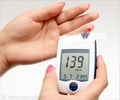Obese teenagers who reduced their body mass index by 8 percent or more showed improvements in insulin sensitivity, an important metabolic factor related to the later development of type 2 diabetes.

BMI is a measure of body weight adjusted for height.
"This threshold effect that occurs at 8 percent suggests that obese adolescents don't need to lose enormous amounts of weight to achieve improvements," said pediatric endocrinologist Lorraine Levitt Katz, M.D., of the Diabetes Center for Children at The Children's Hospital of Philadelphia.
"The improvements in insulin sensitivity occurred after four months of participating in a lifestyle-modification program," Katz stated.
The study team analyzed results in 113 primarily urban adolescents, aged 13 to 17, of whom 81 percent were female, and 62 percent were African American. At the start of the study, their mean BMI was 37.1, placing them in the severely obese range. None had type 2 diabetes, but their obesity placed them at high risk to develop the disease in the future.
An important goal of the study was to determine the threshold of weight loss that significantly impacted insulin sensitivity, glucose tolerance and the presence of metabolic syndrome (MS). MS, as well as abnormal values in insulin sensitivity and glucose tolerance, is associated with the development of type 2 diabetes. In type 2 diabetes, the body is unable to produce enough, or to properly use, insulin. Improved insulin sensitivity reflects a better ability to process insulin.
Advertisement
The threshold of 8 percent-the level at which a decreased BMI showed improved insulin sensitivity-was consistent with results found previously in adults.
Advertisement
The authors added that this study was relatively small, and that future research in larger numbers of patients is needed to reveal longer-term results, and to investigate further effects on adolescent metabolism and health.
The findings appeared online last month in The Journal of Pediatrics.
Source-ANI















